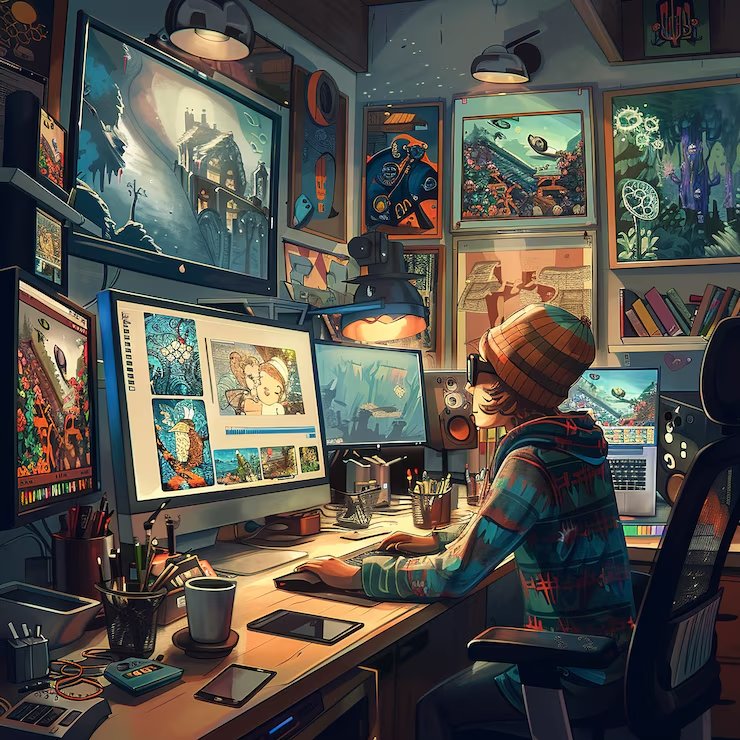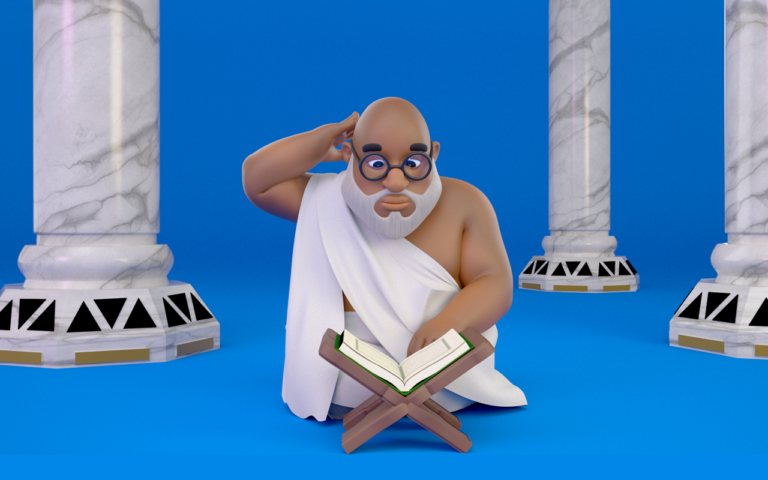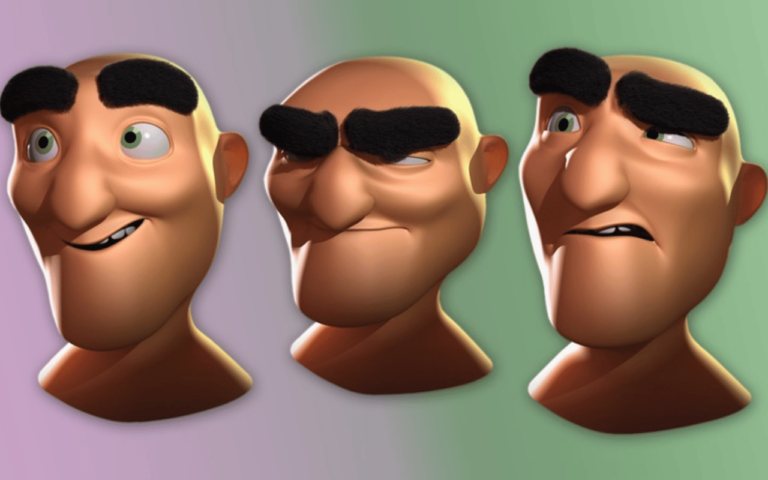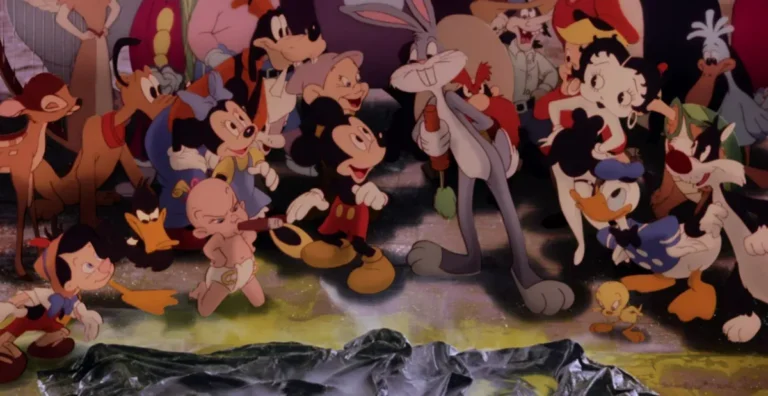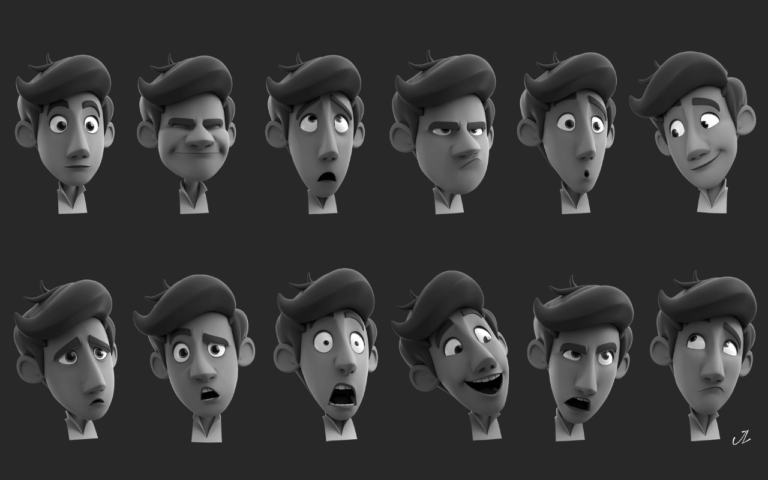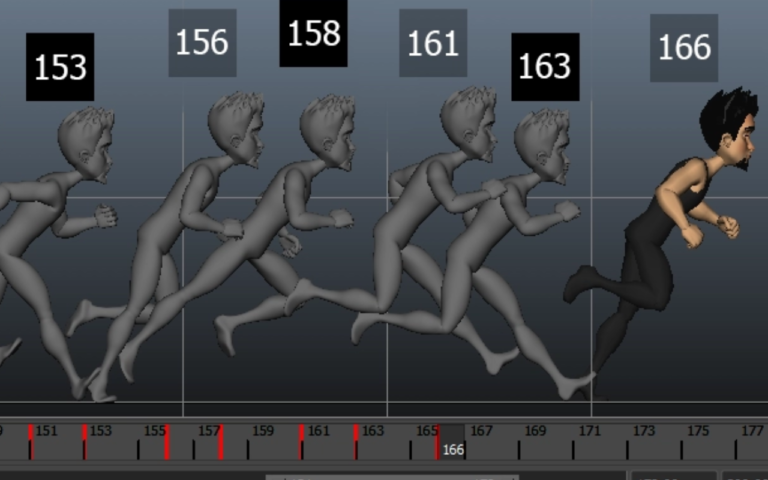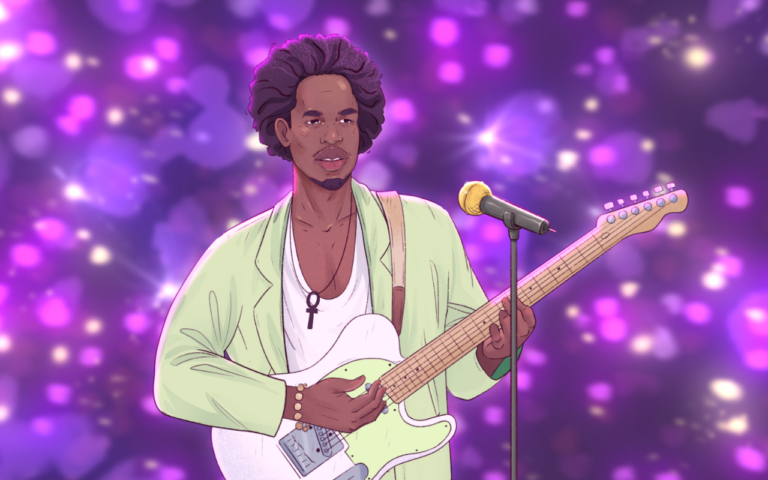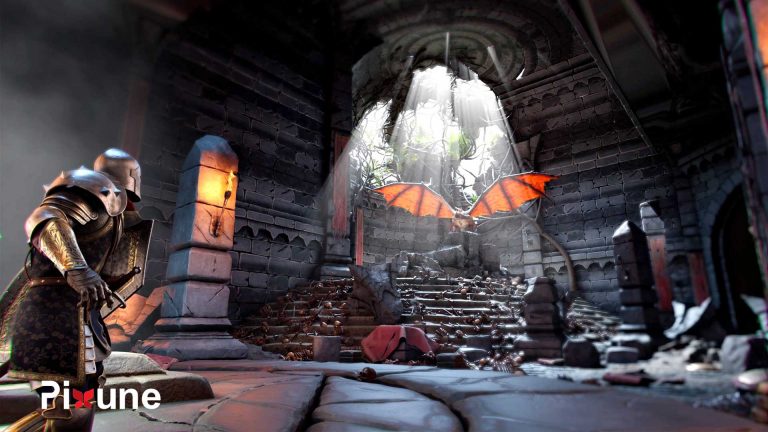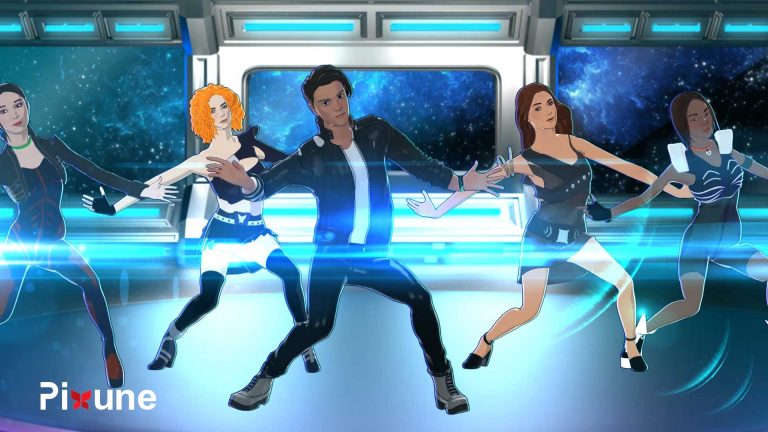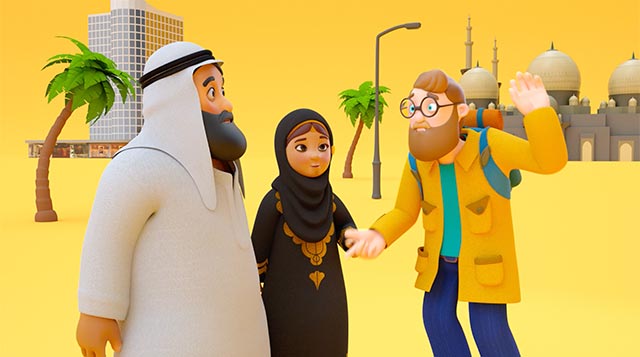Over the last two decades, 3D animation has become ubiquitous across feature films, television, video games, and advertising thanks to technological leaps in animation software and rendering tools. The production timelines can vary widely based on factors like the number and complexity of assets needed, the size of the animation studio, rendering quality, and more. But in general, skilled animators and lots of time are essential to making immersive 3D worlds come to life. Automation tools continue to quicken and improve pipelines as well.
How Long Does It Take to Create 3D Animation?
Creating a 3D animation takes from 3 weeks to +3 years, depending on its scale and many factors. Given all those continuously evolving variables, most professional estimates provide loose ranges based on animation category and historical data. Here are typical overall production time spans:
Short Commercials
Run Times: 30-seconds to 1-minute
Production Time: 3 weeks to 3 months
Short brand commercial animations have tight turnarounds and more formulaic creative confined to selling a specific product or service. Reusing some generalized character assets and backgrounds is more common. But advertising agencies demand quick revisions, causing compressed schedules.
Animated Television Series Episodes
Run Times: 22 to 25 minutes
Production Time: 3 to 6 months per episode
Episodic animation leverages asset reuse across a season, but serialized storytelling introduces complexities. A small core team may work episode-to-episode, outsourcing event-driven peaks to other studios. Certain realistic effects get simplified to meet demand.
Animated Video Game Cinematics
Run Times: 2 to 10 minutes
Production Time: 6 months to 1 year
Polished 3D game trailer production and cinematics promote titles, reveal backstories, or set seasonal events. The short run times allow focusing resources on highly-detailed characters, effects, and rendering for marketing. Producing in tandem with game development means tighter deadlines.
3D Animated Films
Run Times: 80 to 100-minutes
Production Time: 2 to +4 years
Full-length 3D features allow breathing room for the intricate worldbuilding and highly rendered image integrity that big screens demand. The lingering schedules stem from the immense scale and volume of unique, realistic virtual assets paired with consumer expectations set by animation pioneers.
Read More: How Much Does a 3D Animation Cost?
Timeline Duration of the 3D Animation Production Pipeline
Here is a breakdown of the typical timeline duration for major phases of the 3D animation production pipeline:
Concept Development:
- 2-4 weeks for short projects
- 6 months to 1 year for feature films
Modeling:
- 1 week to 1 month for environmental/background assets
- 1-2 months for hero characters
Texturing and Materials:
- 1 week to 2 weeks (can overlap with modeling phase)
Rigging:
- 1 weeks to 3 weeks per character
Layout and Animation:
- 2 weeks to 1 month for short projects
- 6 months to +1 year for feature films
Lighting:
- 2 weeks to 1 month
- It can be ongoing simultaneously with animation
Rendering:
- 1 week to 1 month (background renders can take place incrementally alongside other phases)
- Longer for final high-resolution renders, especially feature animation
Post-Production:
- 2 weeks to 1 month
- 3-6+ months for CGI and visual effects heavy films
3 Examples of 3D Animated Projects Timelines
Here are 3 well-known examples of 3D animated projects, like Toy Story, Frozen, and Despicable Me, and their reported production timelines:
Toy Story (1995)
Runtime: 81 minutes
Production Timeline: 4 years
Pixar’s first feature-length 3D animated film revolutionized the animation industry. As the first of its kind, the movie was mainly developed from scratch without existing assets. The story, characters, virtual sets, rigging, animation, and rendering all took shape over 4 years before release.
Frozen (2013)
Runtime: 102 minutes
Production Timeline: 3 years
Disney’s hugely popular Frozen leveraged some existing character animation tech from Tangled’s development, but the ice-centric effects, detailed environments, and new character designs like Elsa, Anna, and Olaf drove 3 years of production.
Despicable Me 2 (2013)
Runtime: 98 minutes
Production Timeline: Less than 3 years
Sequels tend to speed up work by reusing main characters and some elements. Despicable Me 2 brought back popular lead characters modeled, rigged, and even animated from the first film, though new ones were added and changes occurred.
8 Factors That Impact 3D Animation Production Timelines
Understanding these pipeline stages underscores why 3D animation schedules can stretch from weeks to years. What accounts for so much variance? Here are some of the key factors:
1. Project Length and Complexity
The runtime length of a 3D animation project has an obvious correlation with production time. A 3-minute animated short will take exponentially less time than an 85-minute 3D movie. The number of unique sets, diverse characters, intricate virtual objects, and level of storyline intricacy also play into complexity. For example, Pixar’s Brave, with its detailed medieval environments and stylized characters, took around 6 years, while a 30-second commercial may use only a single background asset.
2. Shot Number and Type
The number of camera angle shots needed factors into animation timelines too. Quick-cutting commercials may have upwards of 125 shots requiring individual scene setups, animation, lighting, and renders per 10-30 seconds. Action-heavy stories also demand more shots. In contrast, indie animated films might average around 900 shots total due to smaller budgets. Evolving simulation technology can automate some shot types like smoke plumes, fuzzy objects, or particle effects to save time too.
3. Level of Realism
The production goals around achieving photorealism make a marked difference in time requirements. Pursuing hyperrealistic digital likenesses of humans, locations, and objects raises the bar on the number of textures, modeling precision, motion dynamics, and rendering needs compared to stylized animation. Animating garment wrinkles or strands of fur individually takes patience! Many studios leverage shortcuts by sometimes mixing realistic lead characters with cartoonish background figures.
4. Team and Studio Size
3D animation agencies vary from handfuls to hundreds of specialists. Larger, well-established studios like Disney’s Pixar or video game cutscene creator Blur Studio can divide workflow segments among bigger, full-time modeling, surfacing, animation, effects, and lighting crews. That allows tackling asset production parallel to speed up overall timelines. Smaller indie studios juggle more generalist animators out of budget necessity, causing bottlenecks. Many studios increasingly leverage offshore talent for supplementary animation help too.
5. Reuse of Existing Assets
Whether creating franchise sequels or episodic series, reusing and modifying some proportion of legacy 3D asset libraries from previous productions can greatly accelerate new projects. For example, animating an established lead character like Buzz Lightyear in a new Toy Story movie skips back to rigging rather than modeling. Even mixing and matching context, like placing old characters into fresh situations, avoids full re-creation. Revisiting existing animation cycles or shot setups also speeds up keyframe animation. However, some outdated assets require revamping to match modern rendering or physics quality.
6. Experience Level
Seasoned modeling experts intuitively sculpt meshes efficiently versus newcomers. Expert riggers can quickly generate reusable controls. Veteran animators reuse tried animation principles. All of this artistic muscle memory accumulates to make experienced teams faster through generations of productions. Studios therefore seek crew continuity. However, technology changes force updating techniques, while natural human variation impacts speed too. Training and onboarding new recruits slow things down as well until skills improve.
7. Type of Animation
Certain animation techniques, styles, or types of animation inherently take more finesse than others, impacting schedules. Hand-keyframed character motion with emotional expressions, overlapping action, and squash-and-stretch principles demand manual craft. Simulating ambient natural effects like smoke or fire relies more on physics software automation. However, simulations require artistry to instill purposeful movement and fine-tuning values takes trial-and-error testing. Stylized motion also affords more leeway than anatomically precise animation. Leaning into the strengths of available tools and animators is key.
8. Number of Revisions
Perfecting completed animations, shots, and full sequences through client feedback and redos counterintuitively extends timelines. Yet this reality of the iterative creative process inevitably means revising storyboards, remodeling assets, changing camera perspectives, reanimating motions, relighting shots, and re-rendering scenes multiple times to fix issues. Limiting do-overs requires clear project requirements, schedules, and signoff protocols. Building some change allowance into budgets is also crucial.
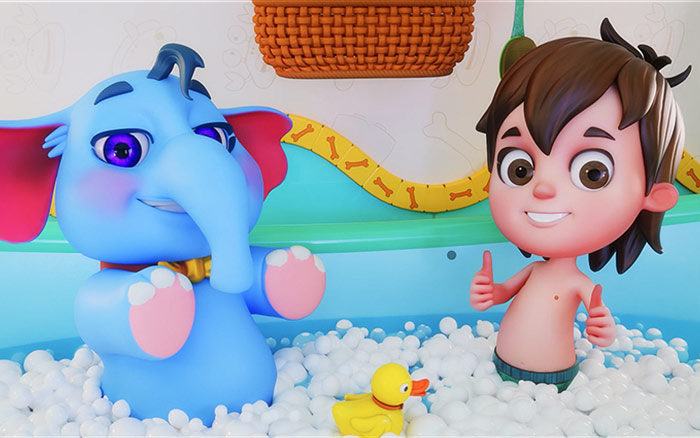
Speeding Up the Process
Are multi-year time investments in 3D animation simply inevitable? Advancements aim to streamline parts of the pipeline:
Leveraging reusable asset libraries: Studios constantly expand generalized prop, character model, and animation databases to mix and match across projects, saving modeling and rigging steps. AI tools identify reusable assets too.
Procedural generation tools: Software auto-generates reusable texture maps, landscape terrain, foliage clusters, building modules, and other elements defined by adjustable rules instead of being constructed individually.
AI and ML acceleration: Emerging computer vision and deep learning research targets automating techniques for layout shot composition, character rig customization, motion capture cleanup and animating natural phenomena realistically to reduce manual steps.
Relying on motion capture data: Performing actual human, animal, and object movement via real-world sensors provides more organic motion foundations for keyframe enhancement instead of manual animation.
Outsourcing and adding staff: Animation outsourcing and dividing workload across larger teams with specialty support studios offsets more singular tasks over any one person and prevents artist exhaustion through better shift coverage.
Setting realistic quality targets: Final rendered frames do not always require film-level perfection for simpler projects, allowing smarter optimization of polygons, textures, lighting, and post work. Prioritizing some visuals over others based on story impact prevents wasted effort too.
Embracing procedural and AI advancements to offload repetitive steps shows enormous promise. But a strong artistic vision and the creativity of animators themselves remain 3D animation’s true force into the future.
Conclusion
In closing, 3D animation timelines vary substantially based on the context, goals, tools, staff, complexity, techniques required, and inevitable revisions that emerge. Quality 3D animation simply necessitates patience and persistence. Anywhere from weeks to years might pass before all the intricately orchestrated components of a virtual film set or video game cinematic come fully to life.
Automating more tedious technical animation tasks with procedural tools and AI assistance will likely continue accelerating studios. But that inspired human artistry remains animation’s priceless ingredient. Finding the right balance between 3D animation quality, budgets, and efficient use of skilled animators and technology will allow producers to meet demands in a more timely way.
